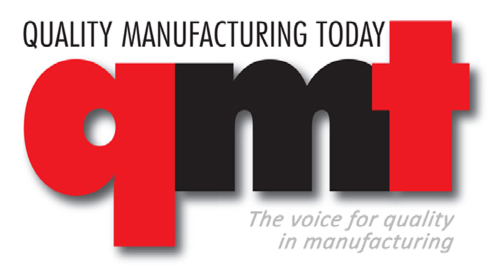View article online.
By Michael A. LyleFrom smartphones to tablets to laptops, mobile devices are becoming the standard in virtually every industry, with the number of smartphones surpassing one billion worldwide this year, according to Strategy Analytics. Manufacturing is no exception, as many of today’s global manufacturers are realizing the value that mobile technology can bring to their enterprise’s quality program—due in part to the advancing capabilities and reliability of the cloud.
According to a recent report from IDC Manufacturing Insights, manufacturers cite “mobility” and “cloud” as two of the four most important emerging technologies to the supply chain (IDC Manufacturing Insights, “Business Strategy: 2012 Supply Chain Survey Results and Insights,” MI235719, July 2012).
Behind this trend line are companies that are finding ways to use cloud and mobile solutions to close the reporting loop and collaborate through the supply chain based on real-time data. A large bicycle manufacturer monitors real-time quality data at seven supply facilities in China using the cloud and is able to respond to events in real-time. A mid-size salad producer collects and sends enterprise-wide data into a single cloud repository where it can be monitored for regulatory compliance.
Cloud technologies expand the mobility of quality programs by removing the physical constraints of attaining and sharing data in the supply chain. Tests that once had to be performed on check sheets and manually entered for post-production analysis can now be punched into an iPad and be instantly accessed halfway around the world in real time. The technology is opening up many new opportunities for companies to rethink how they approach quality and is putting the complete lifecycle of a product quality and traceability data at your fingertips.
Many companies have built their data infrastructure in pieces, with different modules added over time to achieve different objectives. Incoming inspection data may be housed in one system, while mold process data are housed somewhere else. The hodgepodge of different systems means that data are rarely available to the right person at the right time.
If that describes the situation in one facility then what happens if you are responsible for managing quality in 10 facilities, with the legacy systems acquired by each over time. How do you see which are your top performers? Which facilities are the biggest wasters? How do you know that each is maximizing their ability to succeed? The truth is, the data can all be integrated into a single system for monitoring and analysis, with the results displayed on charts and dashboards on a smart phone or any other device.
That is why so many manufacturers are taking a closer look at where and how their quality data are stored. If it’s managed internally, what is the cost, what additional modules are required to properly manage it? What other value could the required IT resources provide? Cloud platforms create a much lighter footprint than on-premise deployments, are low-risk with lower up-front capital, and have fewer ongoing maintenance considerations.
Building quality
To meet manufacturers’ regulatory compliance needs, cloud-based quality systems are developed in the same manner as traditional on-premise systems and support increasingly stringent government and industry traceability mandates such as the Food Safety and Modernization Act and 21 CFR Part 11 requirements for electronic signatures in the pharmaceutical & medical device industries. These systems give companies a beginning-to-end data structure that produces required audit reports and the ability to respond to product recalls in a timely manner.The most successful quality programs build quality into processes rather than testing quality out. When planning Six Sigma and continuous improvement objectives, consider how the quality system interacts with your manufacturing environment based on these 5 elements:
- Data Collection and Integration: What type of data do you need to access and where is it currently stored? A system should support automated data collection from different systems and equipment (MES and ERP or CMMs and PLCs, for example) on the plant floor. If a situation requires an operator to manually enter data, then an intuitive user interface is essential.
- Real-time Monitoring and Analysis: Real-time monitoring and analysis give users the ability to react quickly to adverse events. Data are statistically analyzed the instant they are entered into the system. As a result, manufacturers are able to respond to problems before they occur, even remotely, eliminating the possibility of costly recalls and reducing scrap. Operators using a smartphone while on a lunch break can receive instantaneous updates whenever new data arrive, and can access data streams from the quality hub with customizable dashboards and visual reports.
- Workflow Management: Automated and event-based tasks and reminders simplify workflow management, giving shop-floor operators more time to focus on more pressing jobs. When specific data collections are needed, or out-of-spec issues arise, operators can receive alerts directly via a mobile device and respond immediately reducing the number of non-conforming parts produced.
- Advanced Reporting Suite: A quality system requires sophisticated reporting capabilities that support the needs of users at all levels – from the plant floor to quality teams and the C-suite. Reports and dashboards should be accessible anywhere at any time for an up-todate look at, Manufacturing Intelligence across the enterprise.
- SPC Quality Hub: Quality data should be accessible in a single, secure and easily accessible hub. This enterprise quality hub imports data from across disparate sources into a single, secure repository that can be accessed from any browser – even on a tablet while a user is waiting at the airport.

No comments:
Post a Comment